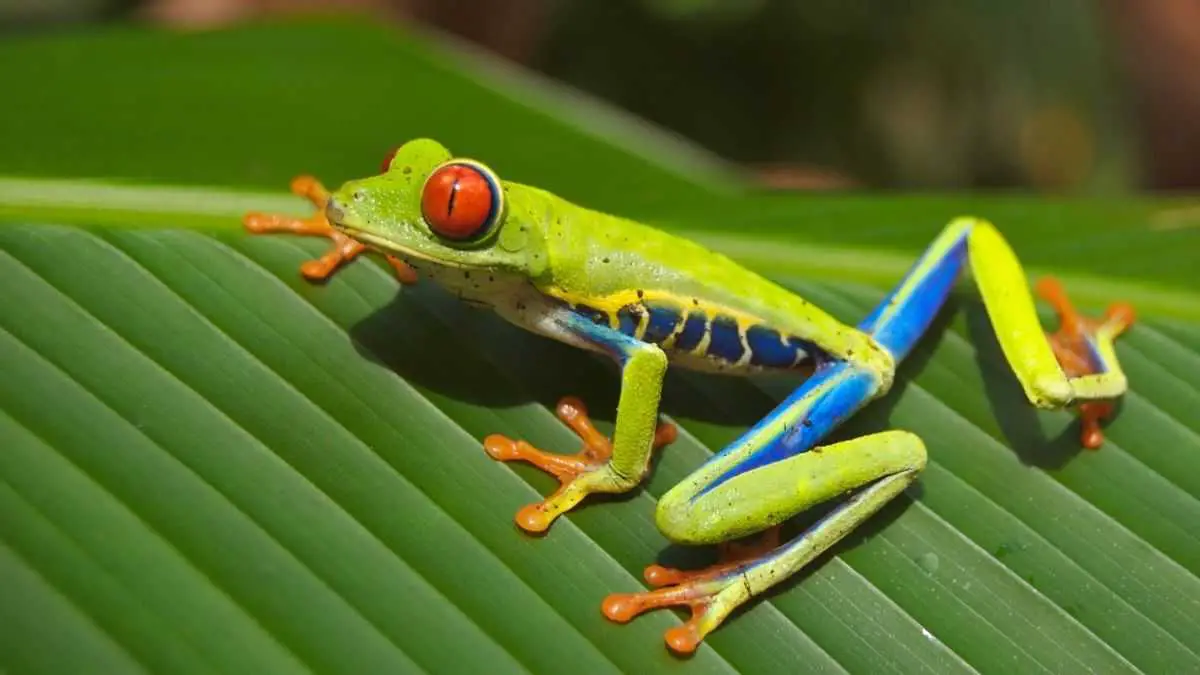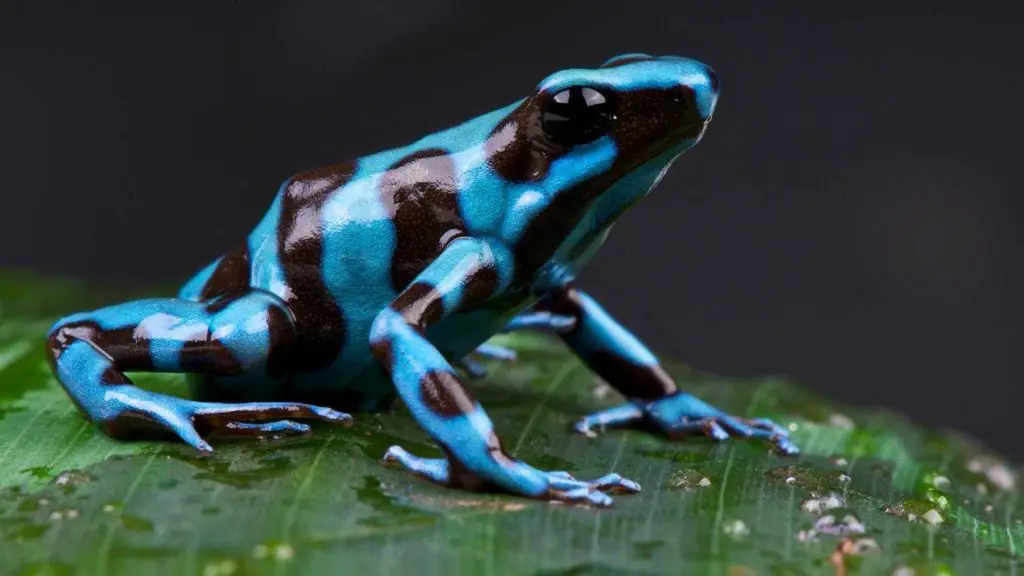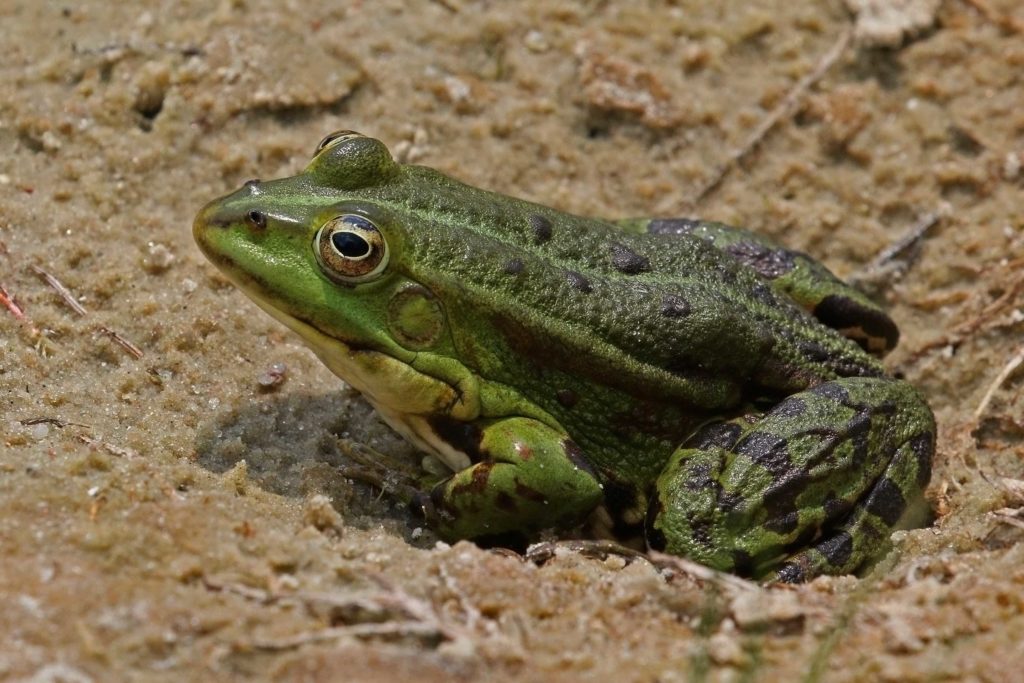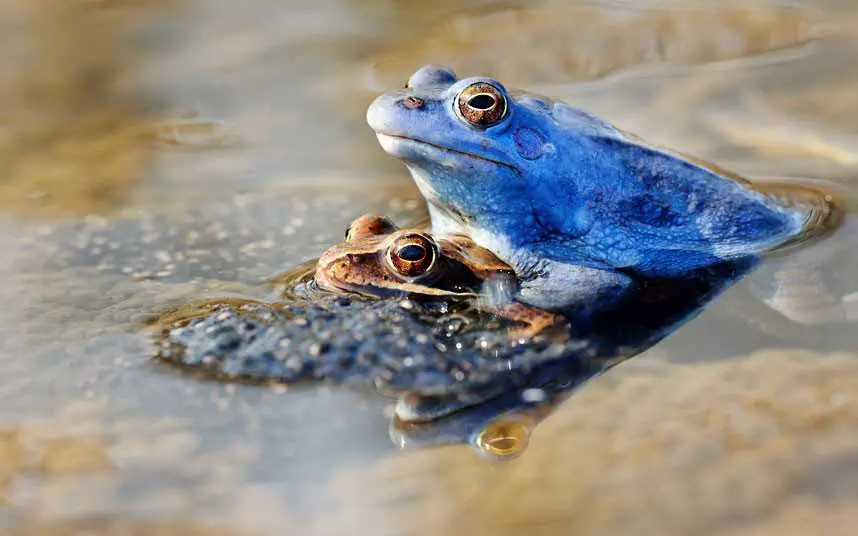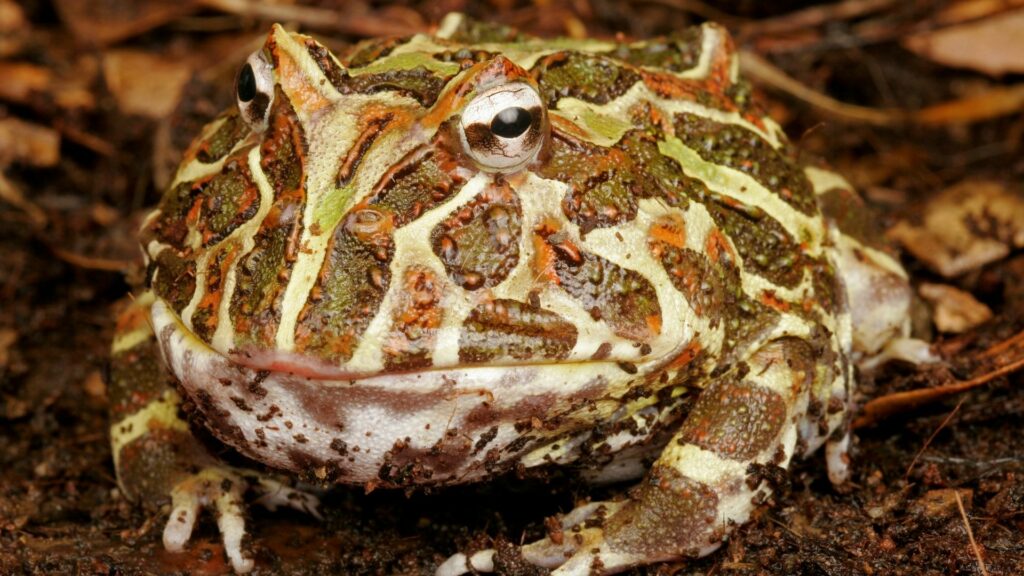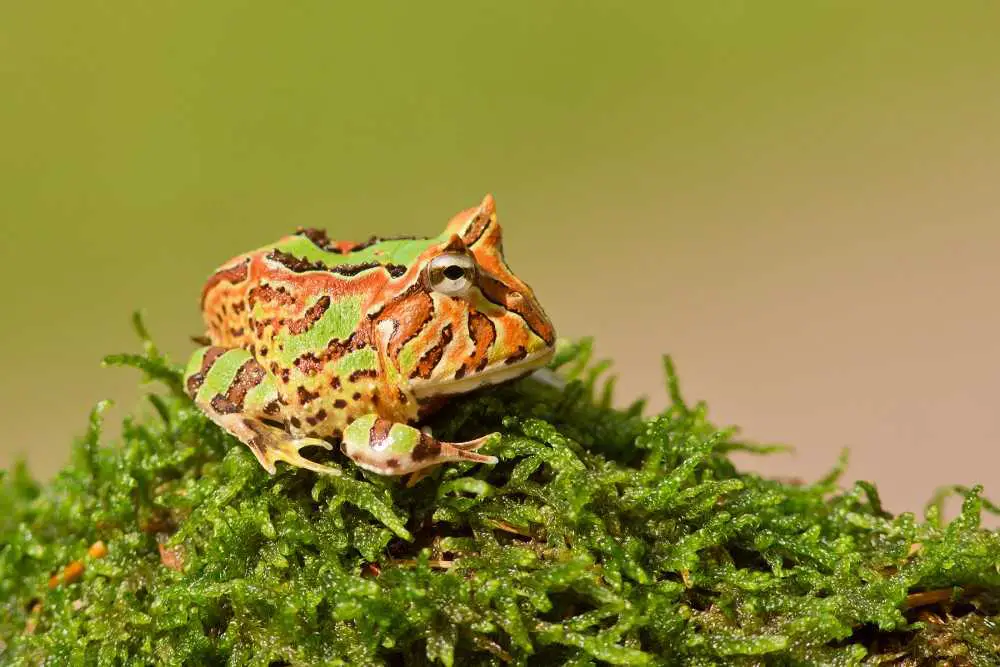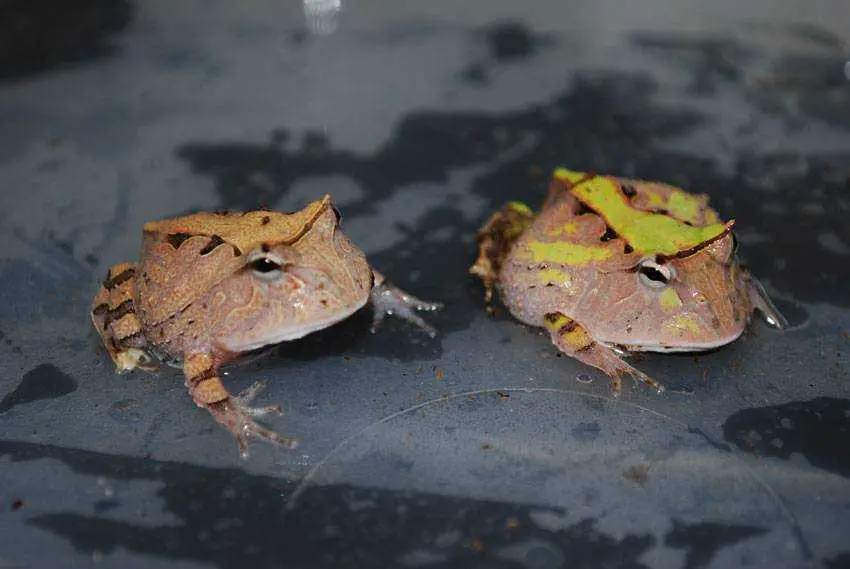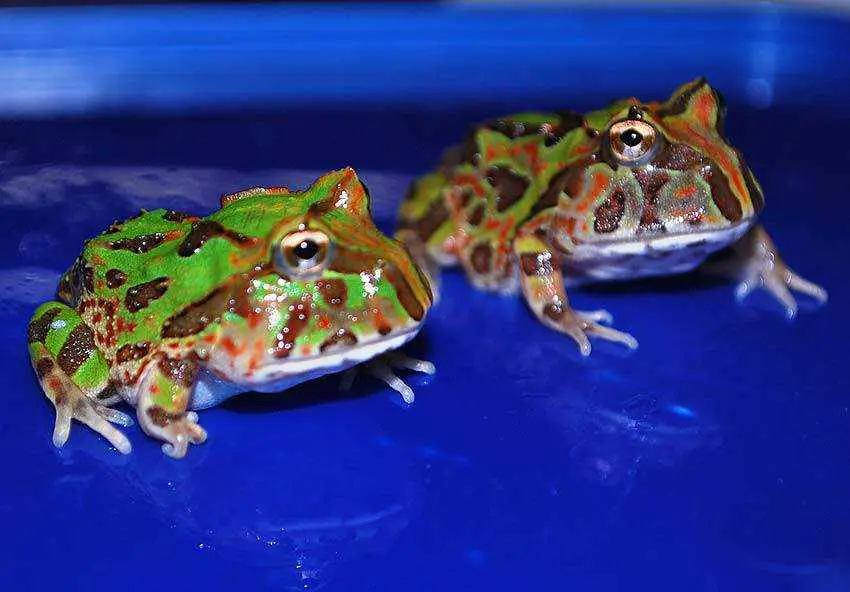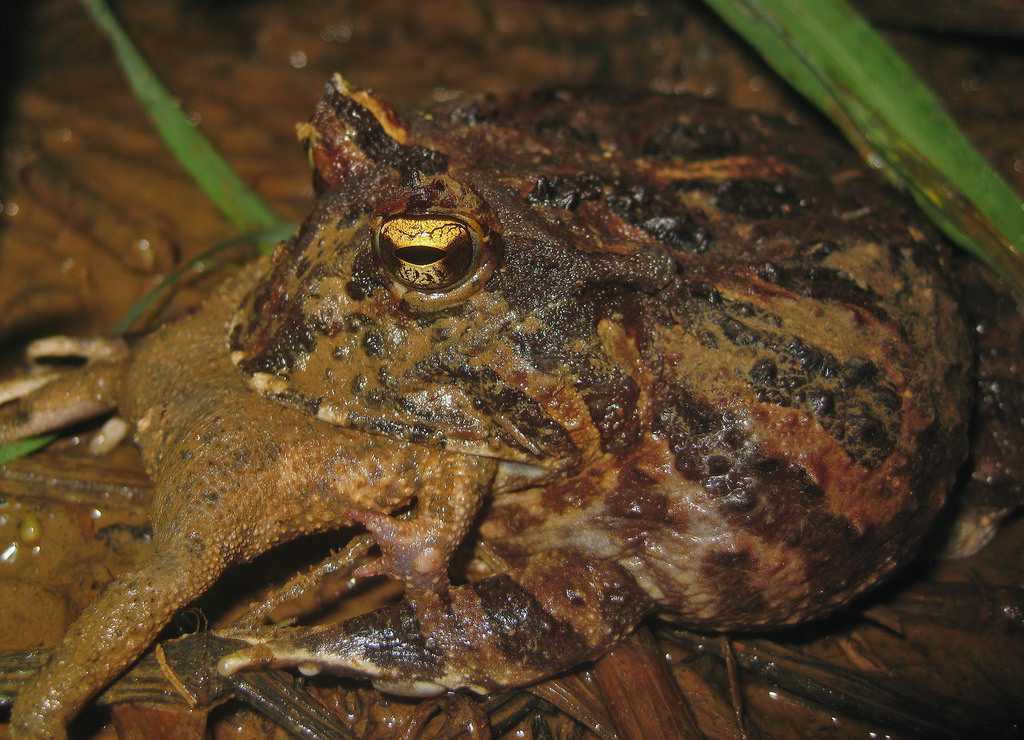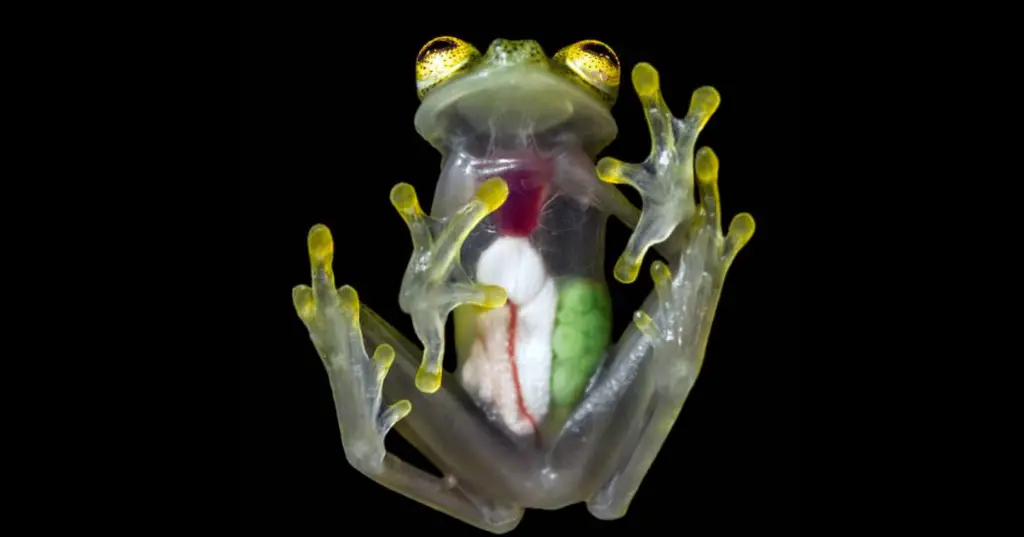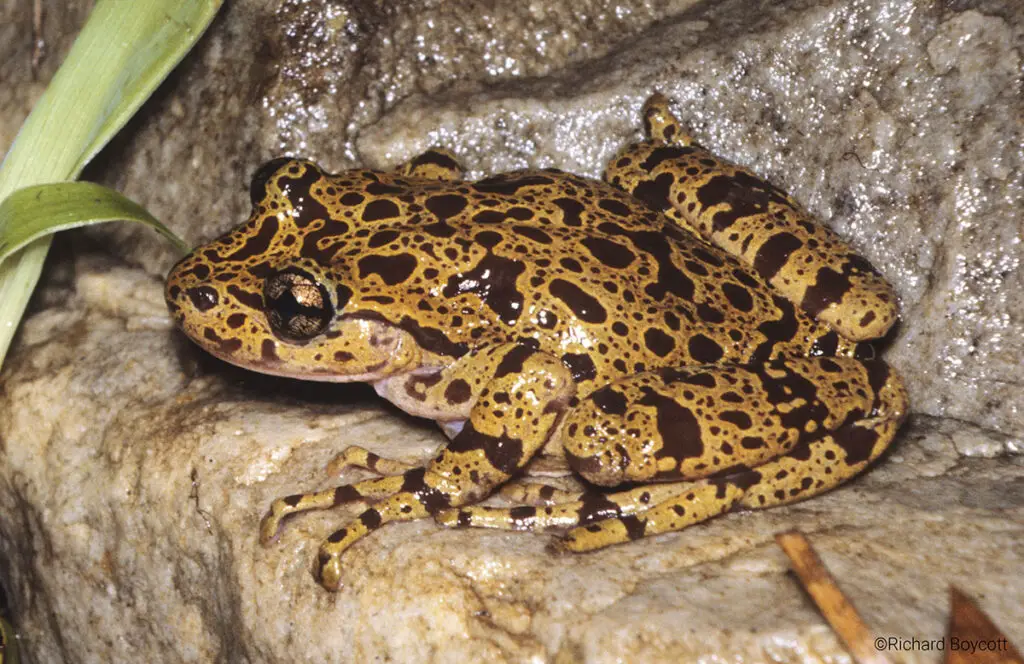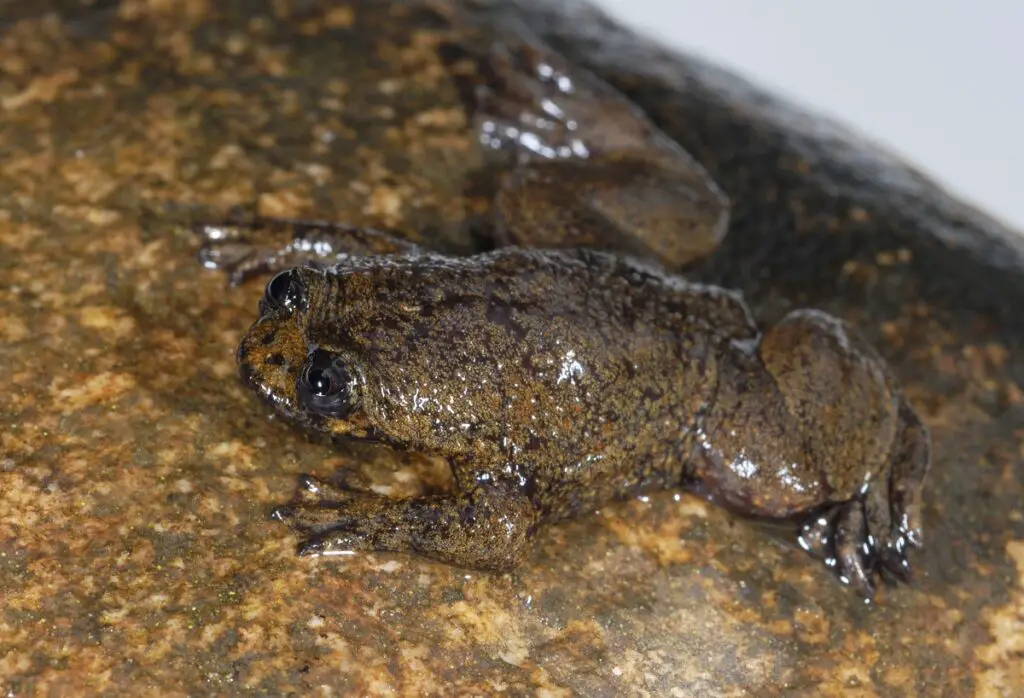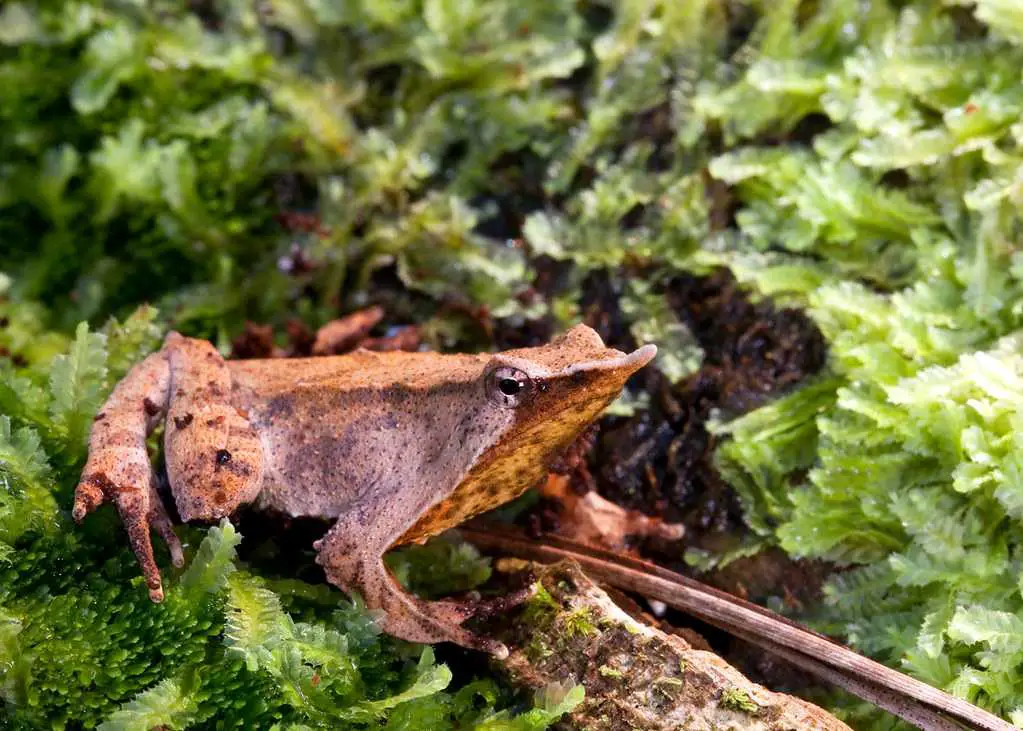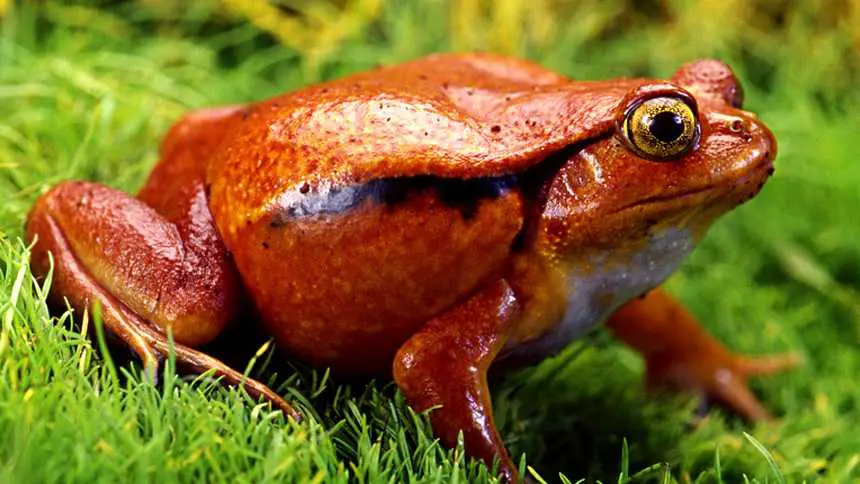These are the different types of frogs:
Contents
American Bullfrog
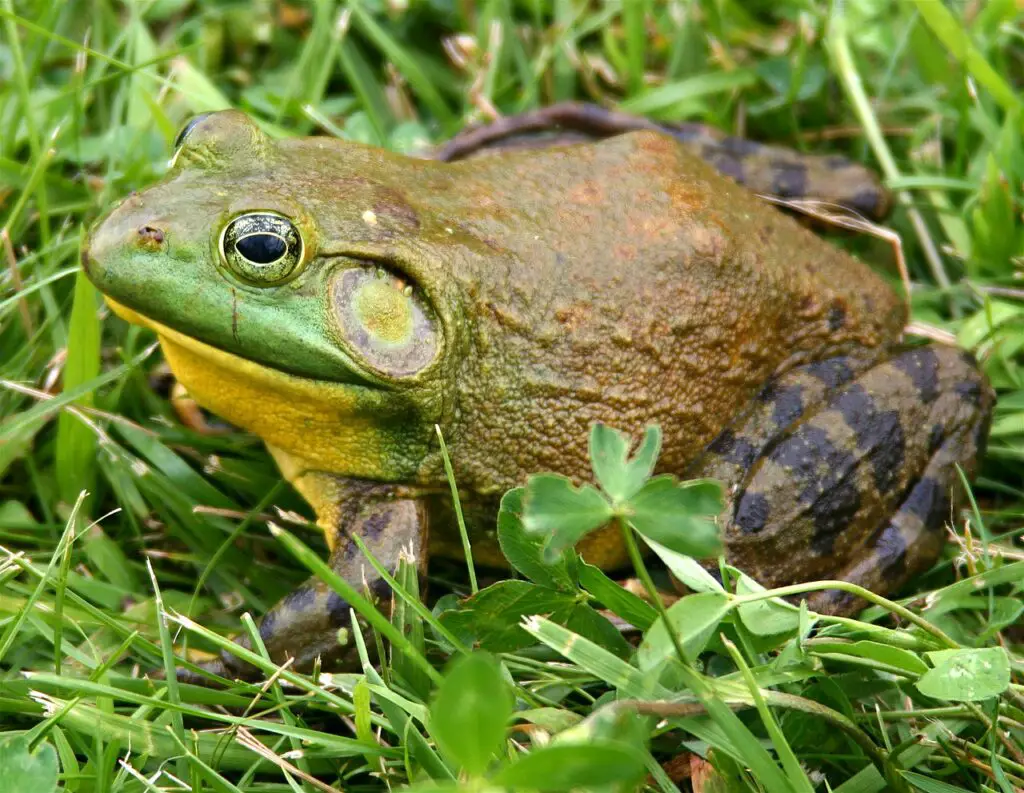
- Kingdom: Animalia
- Phylum: Chordata
- Class: Amphibia
- Order: Anura
- Family: Ranidae
- Genus: Lithobates
- Species: L. catesbeianus
The American Bullfrog is the most common frog you’d see hopping around your backyard (if you live in Eastern North America). It is most often confused with the Common Toad (Buffo Buffo).
Poison Dart Frog
- Kingdom: Animalia
- Phylum: Chordata
- Class: Amphibia
- Order: Anura
- Superfamily: Dendrobatoidea
- Family: Dendrobatidae
The Poison Dart Frog is one of the most toxic animals on the planet. Some poison dart frogs are colorful and attractive but they hold enough poison to kill 20000 mice. Most poison dart frog species are active during the day which is uncommon in frogs and toads as they prefer hunting in the night.
Holarctic Tree Frog
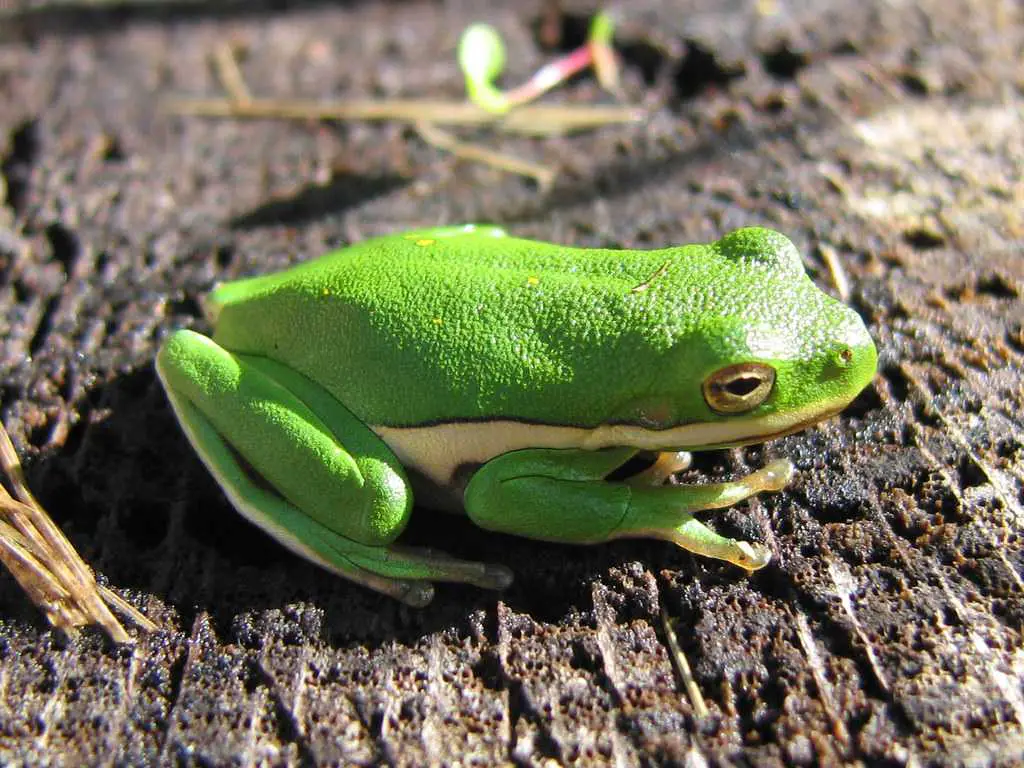
- Kingdom: Animalia
- Phylum: Chordata
- Class: Amphibia
- Order: Anura
- Family: Hylidae
- Subfamily: Hylinae
- Genus: Hyla
Holarctic tree frogs like the Arizona Mountain tree frog are one of only two species of tree frogs found in Arizona. They are usually green in color with a whitish to creamy yellow underbelly.
Red-eyed Tree Frog
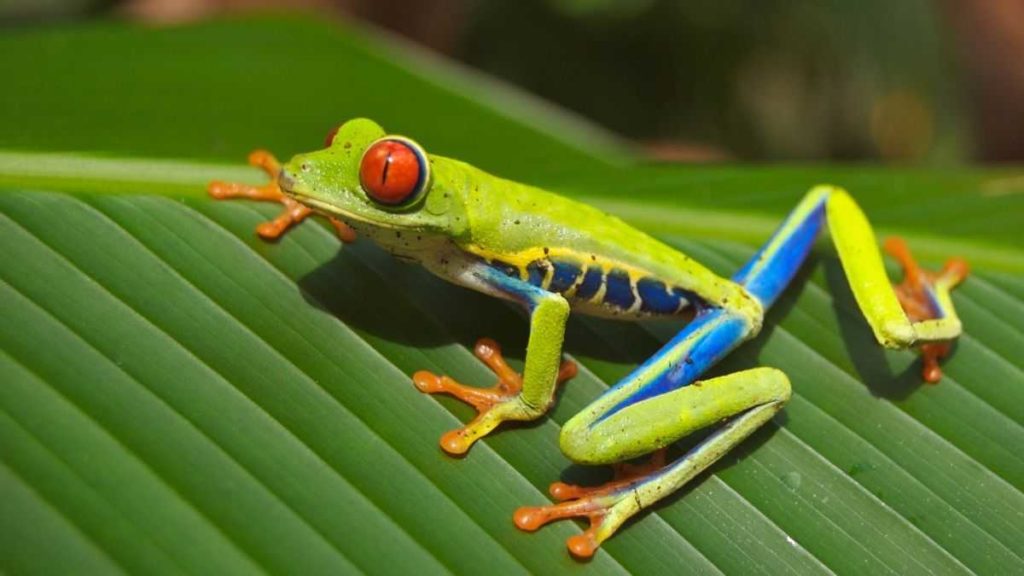
- Kingdom: Animalia
- Phylum: Chordata
- Class: Amphibia
- Order: Anura
- Family: Phyllomedusidae
- Genus: Agalychnis
- Species: A. callidryas
Red-eyed Tree Frogs have bright red eyes and a bright green body with yellow and blue stripes on their sides.
Australian Green Tree Frog
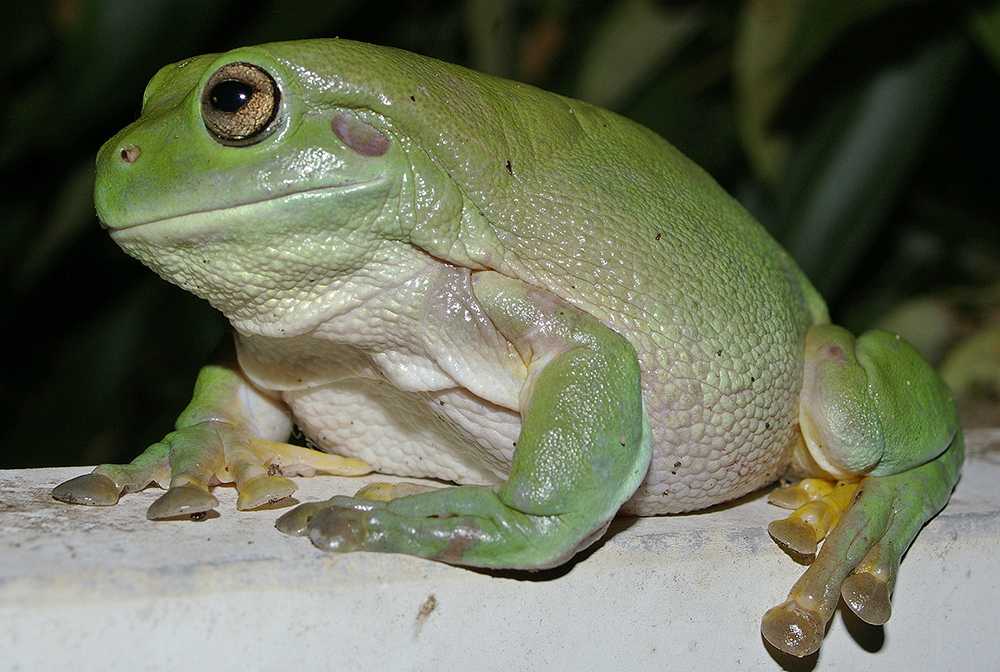
- Kingdom: Animalia
- Phylum: Chordata
- Class: Amphibia
- Order: Anura
- Family: Pelodryadidae
- Genus: Ranoidea
- Species: R. caerulea
The Australian Green Tree Frog is one of the most popular types of pet frogs in Australia. It is hardy and long-lived, docile, easy to care for, large and colorful, and has a smiley face that makes it look happy.
Common Frog
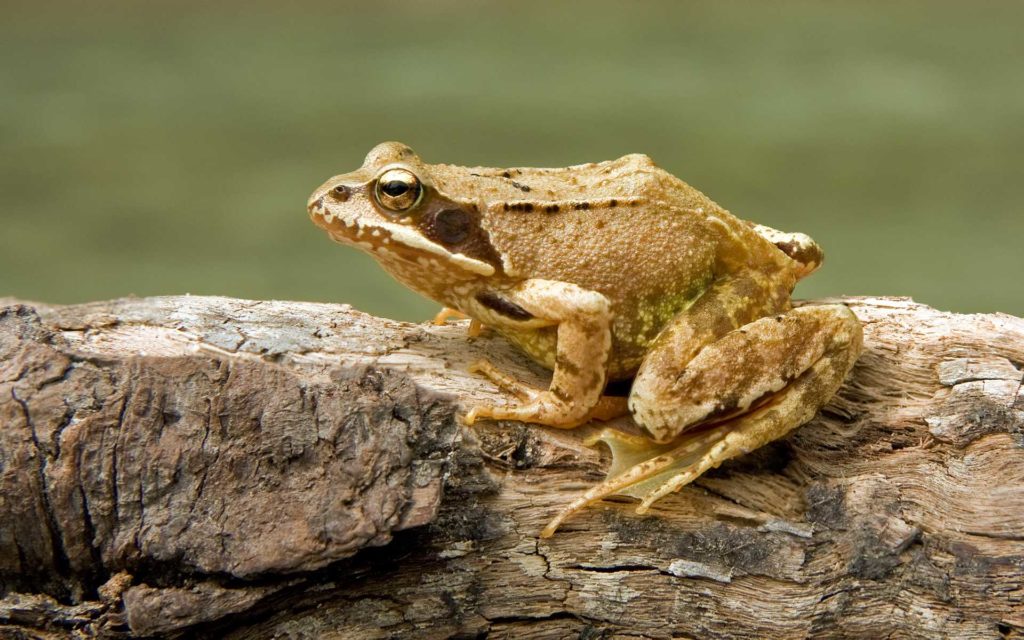
- Kingdom: Animalia
- Phylum: Chordata
- Class: Amphibia
- Order: Anura
- Family: Ranidae
- Genus: Rana
- Species: R. temporaria
Common Frogs prefer to live near terrain with lots of vegetation and a source of water. So, you’ll find these frogs near meadows, gardens, and woodlands.
Marsh Frog
- Kingdom: Animalia
- Phylum: Chordata
- Class: Amphibia
- Order: Anura
- Family: Ranidae
- Genus: Pelophylax
- Species: P. ridibundus
Marsh Frogs are native to Europe and tend to live near ponds, lakes, rivers, and streams.
Moor Frog
Kingdom: Animalia
Phylum: Chordata
Class: Amphibia
Order: Anura
Family: Ranidae
Genus: Rana
Species: R. arvalis
Most Moor Frogs are slender and reddish-brown in color. Males can also develop bright-blue coloration for a few days during the mating season.They usually grow up to 2.8 inches in length.
Northern Leopard Frog
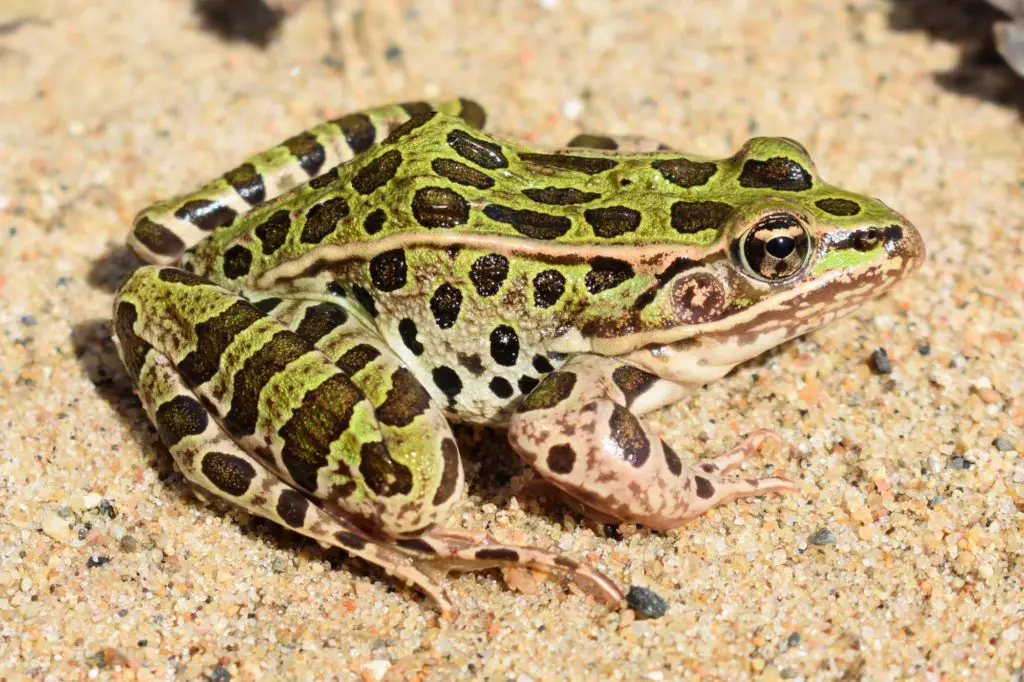
- Kingdom: Animalia
- Phylum: Chordata
- Class: Amphibia
- Order: Anura
- Family: Ranidae
- Genus: Lithobates
- Species: L. pipiens
Northern Leopard Frogs are semi-aquatic frogs that hibernate at the bottom of ponds and lakes or under stones in springs, streams or rivers.
Pool Frogs
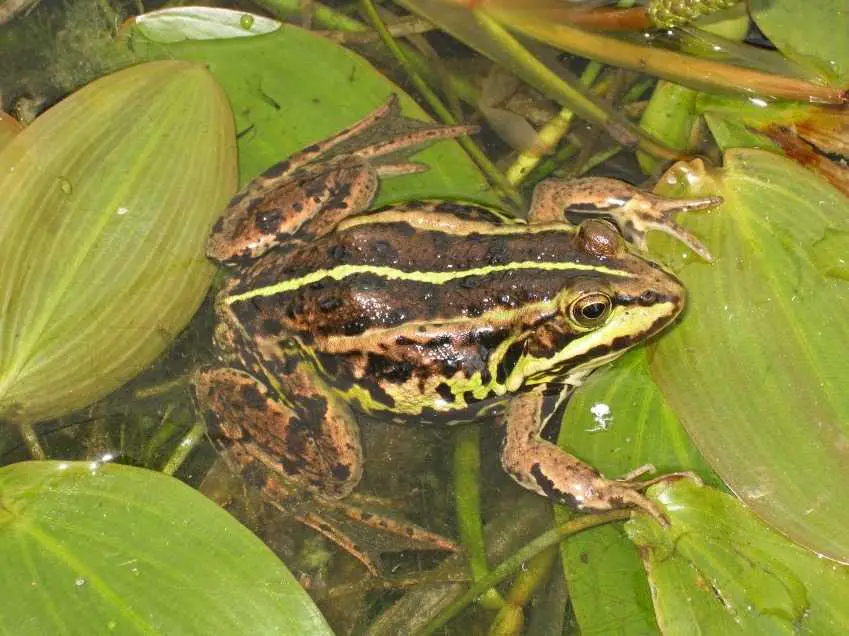
- Kingdom: Animalia
- Phylum: Chordata
- Class: Amphibia
- Order: Anura
- Family: Ranidae
- Genus: Pelophylax
- Species: P. lessonae
Pool Frogs have a pointed head and two lightly colored “racing” stripes running down the side of their back. They are protected under Britan’s Biodiversity Action Plan.
Spring Peeper
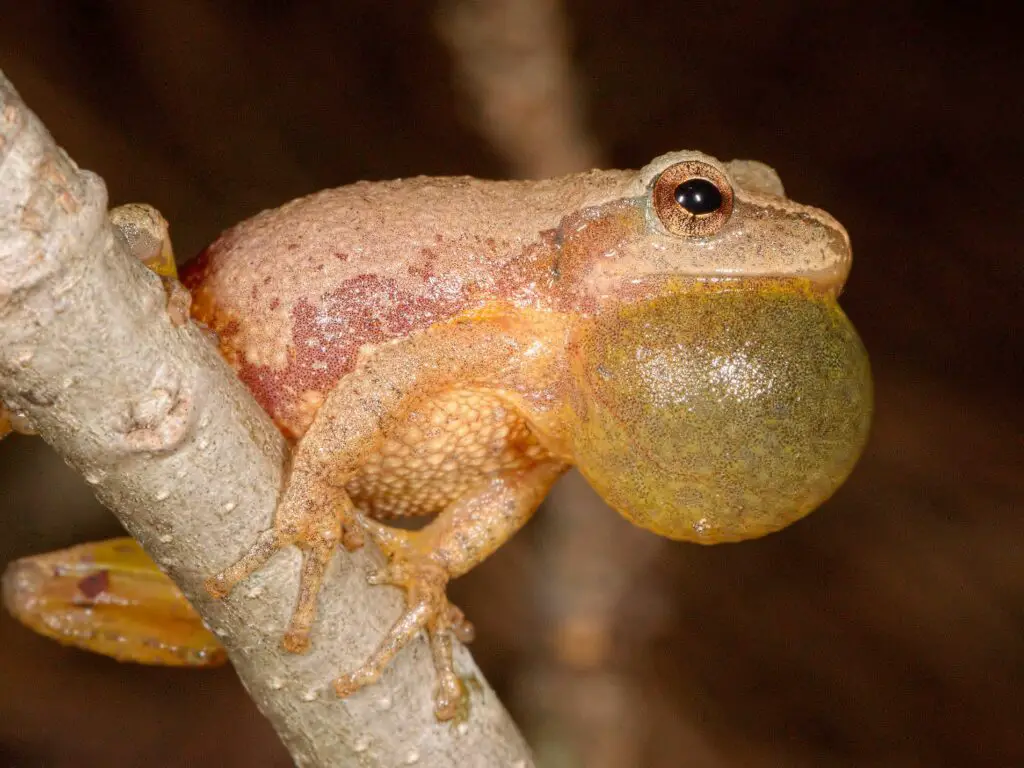
- Kingdom: Animalia
- Phylum: Chordata
- Class: Amphibia
- Order: Anura
- Family: Hylidae
- Genus: Pseudacris
- Species: P. crucifer
Argentine Horned Frog
- Kingdom: Animalia
- Phylum: Chordata
- Class: Amphibia
- Order: Anura
- Family: Ceratophryidae
- Genus: Ceratophrys
- Species: C. ornata
The Argentine Horned Frog is also known as the oranate pacman frog. Their color varies from tan and brown, green and brown, and albino.
Cranwell’s Horned Frog
- Kingdom: Animalia
- Phylum: Chordata
- Class: Amphibia
- Order: Anura
- Family: Ceratophryidae
- Genus: Ceratophrys
- Species: C. cranwelli
Cranwell’s Horned Frogs will try to fit anything in their mouths including other frogs. Cranwell’s horned frog is also called the Chacoan horned frog.
Surinam Horned Frog
- Kingdom: Animalia
- Phylum: Chordata
- Class: Amphibia
- Order: Anura
- Family: Ceratophryidae
- Genus: Ceratophrys
- Species: C. cornuta
Brazilian Horned Frog
- Kingdom: Animalia
- Phylum: Chordata
- Class: Amphibia
- Order: Anura
- Family: Ceratophryidae
- Genus: Ceratophrys
- Species: C. aurita
The Brazilian horned frog prefers to live in subtropical or tropical moist lowland forests, freshwater marshes, intermittent freshwater marshes, and ponds.
Venezuelan Horned Frog
- Kingdom: Animalia
- Phylum: Chordata
- Class: Amphibia
- Order: Anura
- Family: Ceratophryidae
- Genus: Ceratophrys
- Species: C. calcarata
Known as the Colombian horned frog or Venezuelan horned frog because they inhabit both of these countries’ dry lowland grassland and intermittent freshwater marshes.
Glass Frogs
- Kingdom: Animalia
- Phylum: Chordata
- Class: Amphibia
- Order: Anura
- Suborder: Neobatrachia
- Superfamily: Hyloidea
- Family: Centrolenidae
Glass Frogs like humid, montane forests. They are called glass frogs because you can see their insides by looking at their underbellies.
Ghost Frogs
- Kingdom: Animalia
- Phylum: Chordata
- Class: Amphibia
- Order: Anura
- Suborder: Neobatrachia
- Family: Heleophrynidae
Ghost Frogs live near fast moving mountain streams and grow up to 2.4 inches in length. They are native to South Africa.
Bornean Flat-Headed Frog
- Kingdom: Animalia
- Phylum: Chordata
- Class: Amphibia
- Order: Anura
- Family: Bombinatoridae
- Genus: Barbourula
- Species: B. kalimantanensis
Bornean Flat-Headed Frogs do not have lungs. Instead, these frogs breathe through their skin. They tend to live near water sources with high oxygen levels to sustain their life.
Darwin’s Frog
- Kingdom: Animalia
- Phylum: Chordata
- Class: Amphibia
- Order: Anura
- Family: Rhinodermatidae
- Genus: Rhinoderma
- Species: R. darwinii
Darwin’s Frogs have somewhat smooth skin that is normally colored brown to green on the back, and a blend of black and white on the underside.
Tomato Frogs
- Kingdom: Animalia
- Phylum: Chordata
- Class: Amphibia
- Order: Anura
- Family: Microhylidae
- Subfamily: Dyscophinae
- Genus: Dyscophus
Tomato Frogs use an “ambush” tactic to hunt for food. They sit in a particular spot, attack, and eat insects that cross their path. When a tomato frog feels threatened it inflates its body in an attempt to scare off predators.
White Lipped Tree Frog
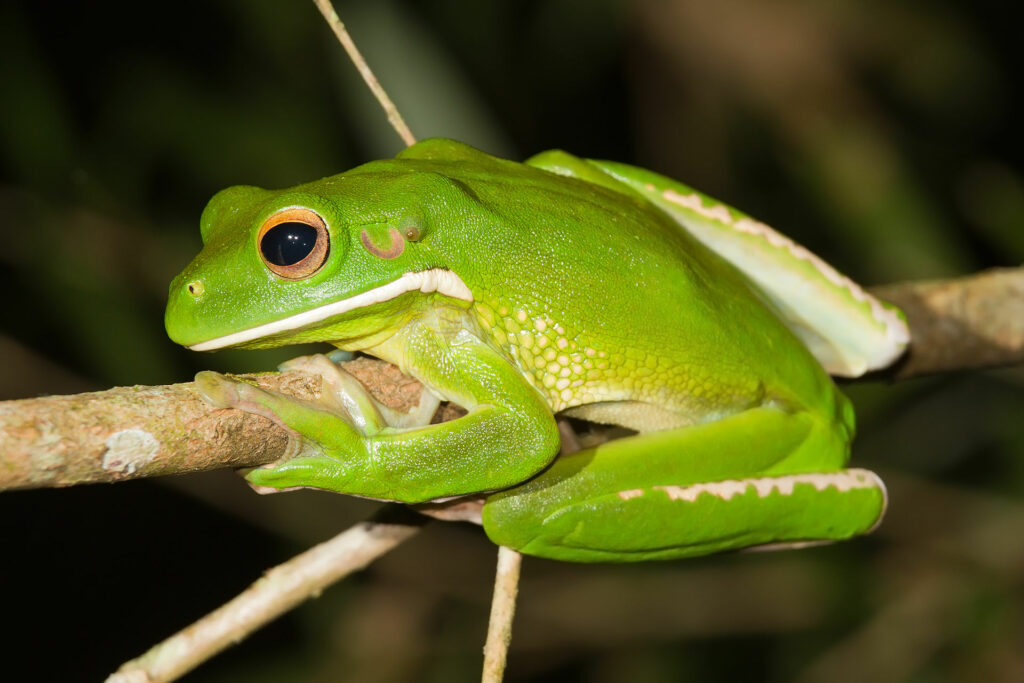
- Kingdom: Animalia
- Phylum: Chordata
- Class: Amphibia
- Order: Anura
- Family: Pelodryadidae
- Genus: Nyctimystes
- Species: N. infrafrenatus
Waxy Monkey Frog
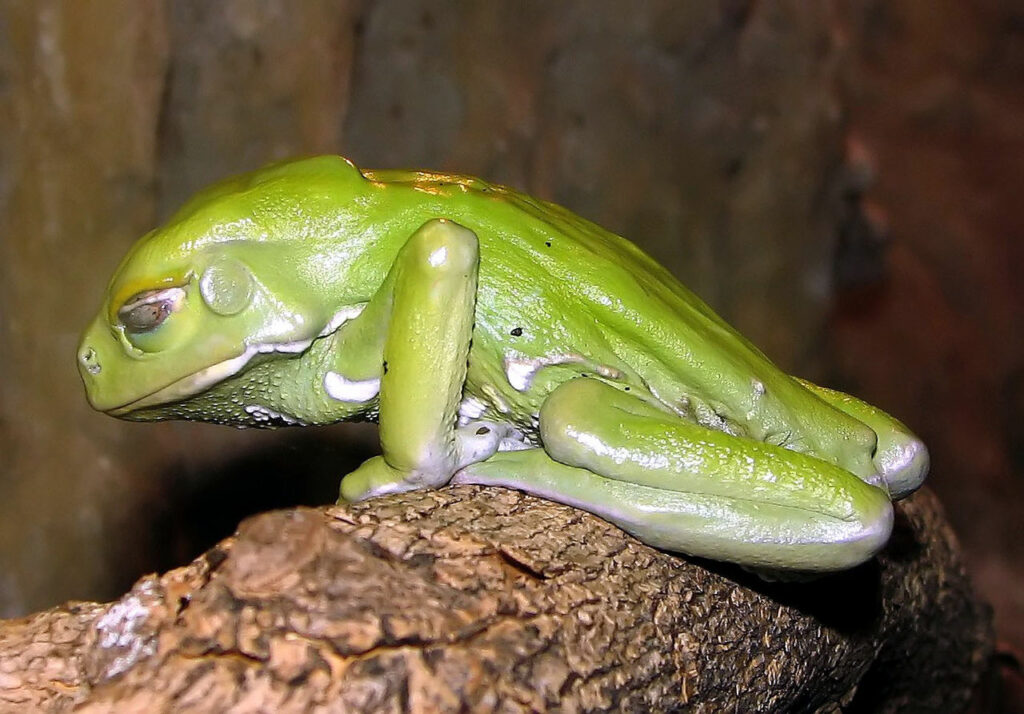
- Kingdom: Animalia
- Phylum: Chordata
- Class: Amphibia
- Order: Anura
- Family: Phyllomedusidae
- Genus: Phyllomedusa
- Species: P. sauvagii
Amazon Milk Frog
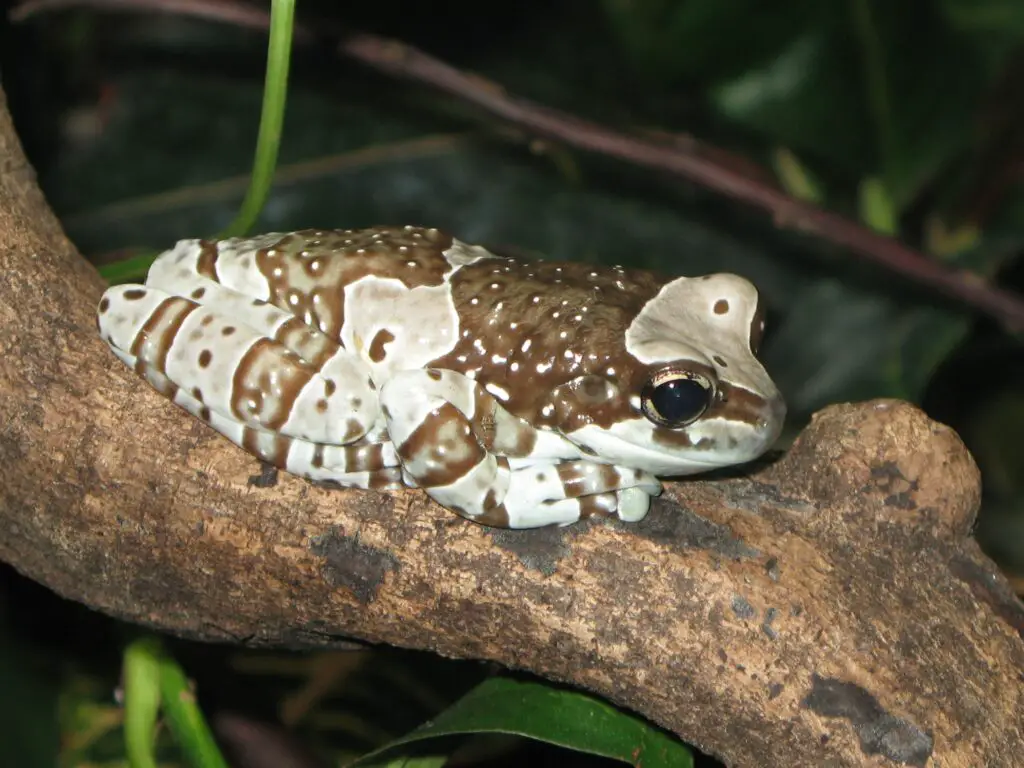
- Kingdom: Animalia
- Phylum: Chordata
- Class: Amphibia
- Order: Anura
- Family: Hylidae
- Genus: Trachycephalus
- Species: T. resinifictrix
What Is The Prettiest Frog?
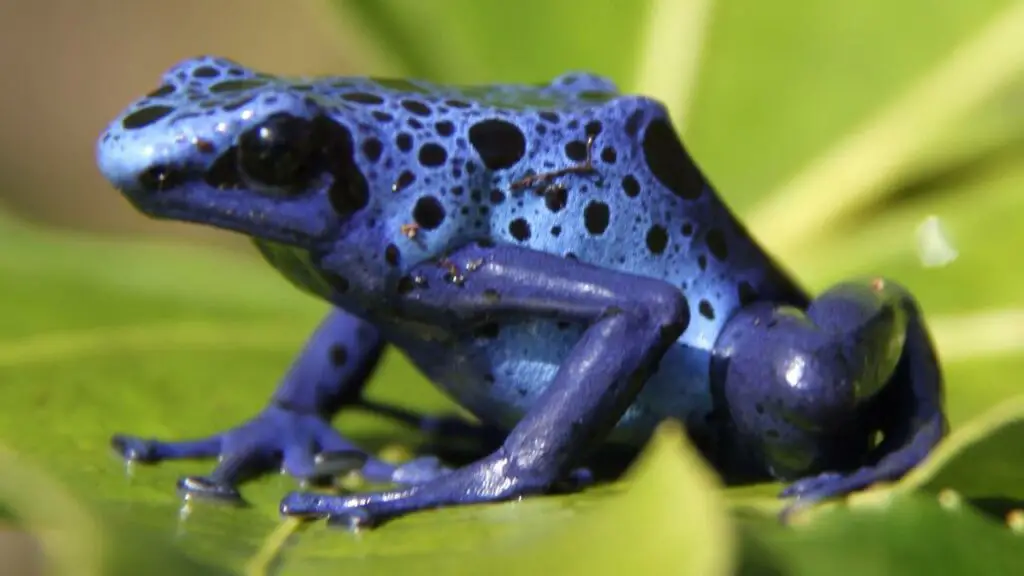
The blue poison dart frog (Dendrobates tinctorius “azureus”) is unquestionably beautiful—like sapphire. It’s one of the prettiest frogs. Like most species of poison dart frog, it is highly toxic if consumed.
What Frogs Make The Best Pets?
These are the best types of frogs for pets:
- White Lipped Tree Frog.
- White’s Tree Frog.
- Waxy Monkey Frog.
- Tomato Frog.
- Red-Eyed Tree Frog.
- Amazon Milk Frog.
- Pacman Frog.
References:
- Wikipedia: Frog
- Facts About Frogs & Toads – Live Science
- Frogs & Toads of Virginia
- Hylidae – Wikipedia
- Hyla – Wikipedia
- Poison Dart Frogs – National Geographic
- poison-dart frogs – Encyclopedia of Life
- Arizona State Amphibian | Arizona Tree Frog
- Red-Eyed Tree Frog – National Geogrpahic
- The dumpy frog – Australian Geographic
- Rana (genus)
- Common Frog (Rana temporaria )
- Marsh Frog Animal Facts | Pelophylax ridibundus
- Moor frog Facts for Kids
- Moor frog – Wikipedia
- Northern Leopard Frog – Rana pipiens
- TN3860 – EPA Northern Leopard Frog. (Hibernation Research)
- Argentine horned frog – Wikipedia
- Ornate Horned Frog: Stats & Facts – Animal Planet
- Cranwell’s Horned Frog – Ceratophrys cranwelli
- Brazilian Horned Frog (Ceratophrys aurita) · iNaturalist
- Glass Frogs – NWF
- Ghost frog – Wikipedia
- Bornean flat-headed frog – Wikipedia
- Bornean Flat-headed Frog | Barbourula kalimantanensis
- Rhinoderma rufum – Amphibia
- Getting to Know The Tomato Frog
- https://en.wikipedia.org/wiki/Dyeing_poison_dart_frog
- https://en.wikipedia.org/wiki/Phyllomedusa_sauvagii
- https://en.wikipedia.org/wiki/Mission_golden-eyed_tree_frog
- https://en.wikipedia.org/wiki/White-lipped_tree_frog
- Top 17 Most Popular Pet Frogs For Beginners – Everything Reptiles
- What You Need to Know About Pet Frogs – Spruce Pets
- Frog & Salamanders Found in Your Backyard
- https://en.wikipedia.org/wiki/Spring_peeper
- https://en.wikipedia.org/wiki/American_bullfrog
- Types of Toads – NatureTingz
